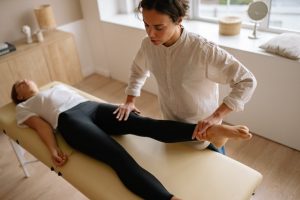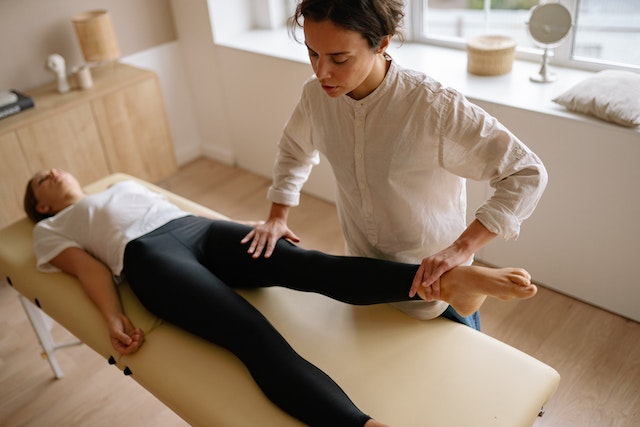This article is tailored for athletes and provides strategies for managing and treating sports-related leg pain. It caters to individuals who engage in athletic activities and may experience leg pain as a result. The article will cover various recovery strategies, including rest, proper nutrition, injury prevention, rehabilitation exercises, and seeking professional help. By offering comprehensive guidance, the article empowers athletes to effectively manage leg pain and optimize their performance and recovery.
Recovery Strategies for Athletes: Managing and Treating Sports-Related Leg Pain
For athletes, sports-related leg pain can be a formidable challenge. This article serves as a guide to effective recovery strategies tailored to athletes, helping you manage and treat leg pain while optimizing your performance and overall well-being.
Introduction: Navigating Sports-Related Leg Pain as an Athlete
The pursuit of athletic excellence comes with its share of obstacles. We shed light on the unique challenges athletes face in managing sports-related leg pain and the importance of embracing recovery strategies for sustained peak performance.
Understanding Sports-Related Leg Pain: Causes and Types
Knowing your enemy is half the battle. We break down the common causes and types of sports-related leg pain, equipping athletes with knowledge to identify, understand, and address their condition effectively.
Rest and Recovery: The Foundation for Healing
Rest is your body’s best friend. We delve into the pivotal role of rest and recovery in managing leg pain, underscoring the significance of allowing your body the time it needs to heal and rejuvenate after intense athletic endeavors.
Nutrition for Recovery: Fueling the Healing Process
Nutrition powers recovery. We explore the impact of proper nutrition on the healing process, outlining essential nutrients and dietary strategies that fuel the body’s recovery, muscle repair, and overall well-being.

Injury Prevention: Techniques to Safeguard Against Future Pain
Prevention is the ultimate goal. We provide athletes with practical injury prevention techniques, including effective warm-ups, stretching routines, and the use of protective gear, reducing the risk of future sports-related leg pain.
Rehabilitation Exercises: Restoring Strength and Flexibility
Recovery is a journey of strength. We present a diverse range of rehabilitation exercises specifically tailored to athletes, focusing on routines that rebuild strength, enhance flexibility, and aid in recovery and injury prevention.
Seeking Professional Help: When to Consult a Sports Medicine Expert
Professional guidance is invaluable. We guide athletes on when it’s appropriate to seek assistance from a sports medicine expert, highlighting their role in accurate diagnosis, personalized treatment plans, and facilitating optimal recovery.
Recovery Modalities: Exploring Physical Therapy and Other Techniques
Diverse modalities aid recovery. We delve into various recovery techniques such as physical therapy, massage, and ice/heat therapy, providing athletes with options to support their healing journey and expedite their return to peak performance.
Mental Well-being: Addressing the Psychological Impact of Injury
Healing the mind is as important as healing the body. We address the psychological impact of sports-related leg pain, offering strategies to maintain mental well-being during recovery, including cultivating a positive mindset and setting achievable goals.
In conclusion, managing and treating sports-related pain is a multidimensional endeavor. This guide equips athletes with comprehensive recovery strategies, empowering you to navigate leg pain, optimize your athletic performance, and embark on a journey of enduring well-being.




